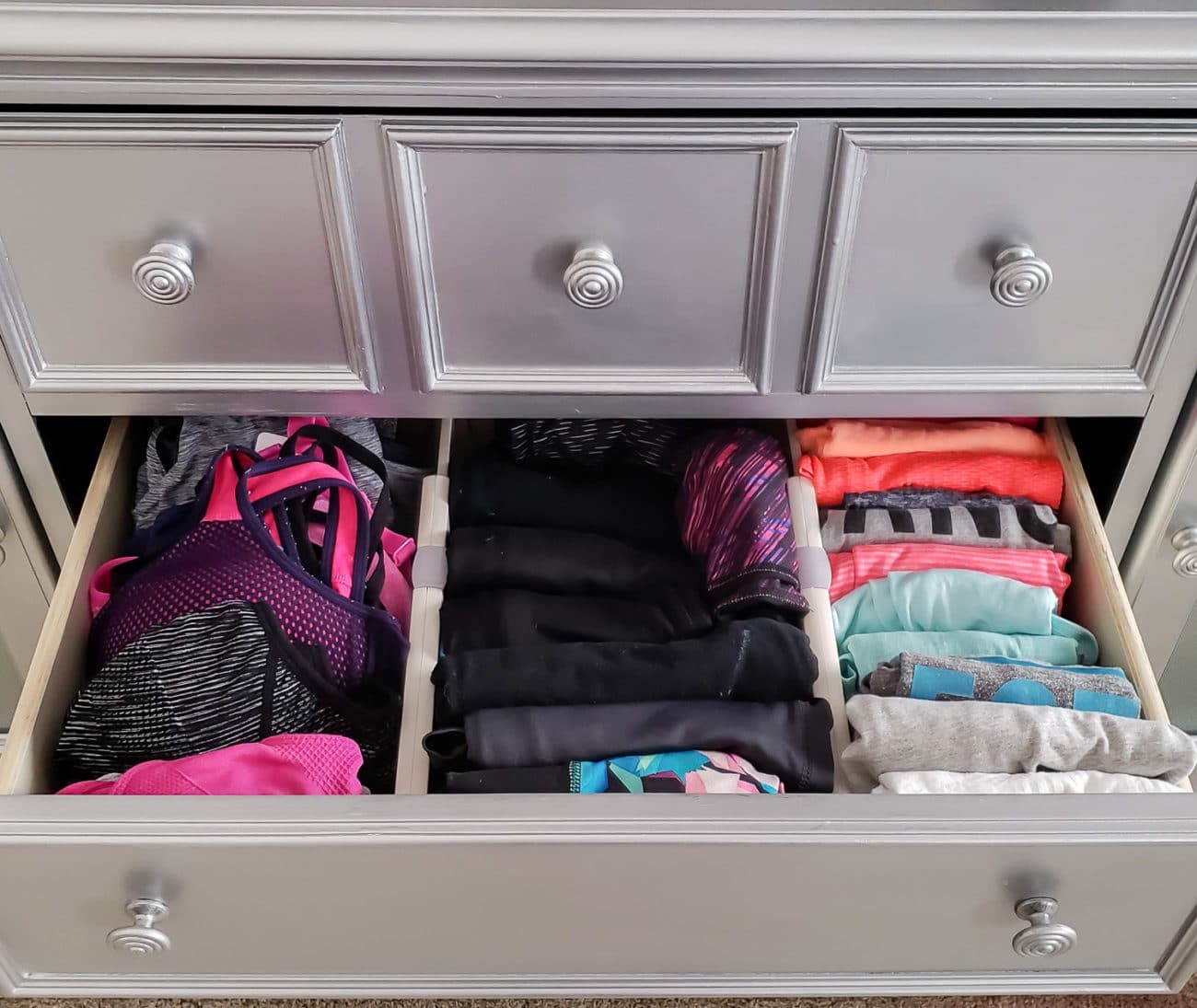
Introduction
A dresser drawer, when meticulously organized, becomes a haven of efficiency and order. The art of dresser drawer organization extends beyond mere tidiness; it involves creating a system that maximizes space, enhances accessibility, and brings a sense of tranquility to your daily routine. This comprehensive guide delves into the intricacies of organizing a dresser drawer, offering step-by-step instructions, practical tips, and innovative ideas to transform your drawers into a haven of orderliness.
Section 1: Assessing Your Dresser and Decluttering
1.1 Empty the Drawer
Begin the organizational journey by emptying the contents of the drawer. Lay everything out on a flat surface, allowing you to see the full inventory of items and evaluate their condition and relevance.
1.2 The KonMari Decluttering Approach
Apply the KonMari method of decluttering, as popularized by Marie Kondo. Assess each item individually, asking whether it sparks joy or serves a practical purpose. If not, consider parting with it to create a more streamlined and intentional collection.
1.3 Seasonal Rotation
Consider rotating the contents of your dresser drawers seasonally. Store off-season items in bins or boxes to free up space and ensure that the items you use daily are easily accessible.
Section 2: Grouping and Categorizing Items
2.1 Categorize Clothing Items
Divide clothing items into categories such as underwear, socks, T-shirts, pajamas, and accessories. Categorization is the cornerstone of effective drawer organization, making it easier to locate specific items and maintain order.
2.2 Sub-Categorize if Necessary
Within each main category, consider further sub-categorization based on color, fabric, or purpose. For example, separate socks into everyday socks, athletic socks, and dress socks to refine the organization.
Section 3: Choosing Drawer Organizers
3.1 Utilize Drawer Dividers
Invest in drawer dividers to create designated spaces for different categories of items. Dividers help prevent items from mingling, maintaining a clear and organized layout.
3.2 Consider Drawer Inserts
Drawer inserts, such as fabric or plastic trays, are excellent for organizing small items like jewelry, accessories, or undergarments. These inserts provide a structured layout and prevent items from getting jumbled together.
3.3 DIY Drawer Organizers
For a budget-friendly approach, consider creating your own drawer organizers using shoeboxes, cardboard dividers, or even cutlery trays. Customizable DIY solutions allow you to tailor the organization to your specific needs.
Section 4: The Marie Kondo Folding Method
4.1 Fold Vertically
Implement the Marie Kondo folding method, which involves folding items into neat rectangles and storing them vertically. This technique not only maximizes drawer space but also allows you to see all items at a glance, preventing the need to disrupt the entire drawer to find a specific piece.
4.2 Vertical Storage for Clothing
Apply vertical storage to clothing items such as T-shirts, sweaters, and pants. This not only conserves space but also minimizes wrinkles and makes it easier to locate specific items without disrupting the entire drawer.
Section 5: Strategically Placing Items
5.1 Frequently Used Items on Top
Place frequently used items at the top of the drawer for easy access. This could include daily essentials like underwear, socks, or sleepwear. Less frequently used or seasonal items can be stored in the lower sections.
5.2 Folded vs. Hanging Items
Determine whether certain items are better suited for folding or hanging. Drawer space is ideal for folded items like T-shirts, while hanging space may be more appropriate for delicate garments or accessories.
Section 6: Maintaining Order
6.1 Regular Drawer Audits
Schedule regular audits of your dresser drawers to reassess the contents. This ensures that clutter doesn’t accumulate, and you can make informed decisions about what to keep or part with.
6.2 Seasonal Refresh
Take advantage of seasonal transitions to refresh your dresser drawers. Assess whether your clothing needs have changed, and make adjustments accordingly. Rotate seasonal items in and out to keep the drawers relevant and uncluttered.
Section 7: Additional Tips for Drawer Organization
7.1 Drawer Sachets or Fresheners
Enhance the freshness of your dresser drawers by placing sachets or drawer fresheners among your clothing. This adds a pleasant fragrance and prevents musty odors.
7.2 Repurposing Unused Items
Consider repurposing unused or unconventional items for drawer organization. For example, an old ice cube tray can be repurposed as a compartmentalized organizer for small accessories.
7.3 Utilizing Drawer Space Efficiently
Maximize drawer space by utilizing the entire depth and height. Use smaller containers for vertical stacking and take advantage of any built-in dividers within the drawer.
Conclusion
Organizing a dresser drawer is an art that combines practicality with aesthetics, transforming a seemingly mundane space into a harmonious and efficient storage solution. By systematically assessing, decluttering, categorizing, and implementing strategic organization techniques, you can create a dresser drawer that not only enhances your daily routine but also radiates a sense of order and tranquility. With the principles outlined in this comprehensive guide, your dresser drawers can become a sanctuary of organized bliss, offering easy access to your favorite items and contributing to a well-curated and intentional living space.